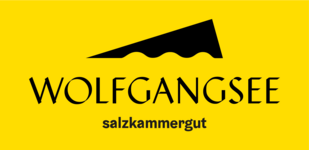Attractions and sights
at lake Wolfgangsee
Museums and exhibitions at Lake Wolfgangsee
Experience history, listen to the world, smile at the bizarre, be a child again, discover contemporary art, marvel at masterpieces.
The museums and exhibitions around Lake Wolfgangsee offer this and much more - you should definitely not miss a visit. From the past to the present - the curators of the interesting collections have created an unrivalled arc of suspense.
Always new - the museums and exhibitions at Lake Wolfgangsee are living witnesses to the art and culture scene of the region in the heart of the Salzkammergut. The permanent exhibitions are constantly being carefully expanded. The changing exhibitions constantly create new perspectives and bring international artists to Lake Wolfgangsee.
Aktuelles
Maria Anna Mozart - called ‘Nannerl’
Mozart's mother Anna Maria Walburga Pertl was born in the former district court in St. Gilgen on 25 December 1720. Her father, Wolfgang Nikolaus Pertl (1667 - 1724), studied at St Peter's Grammar School in Salzburg, where he also worked as a singer. Pertl, who had a successful career as a lawyer, became the vicar of St. Gilgen in 1716 and built the former district court, now the Mozart House, in 1719/20.
Mozart's mother was baptised in the parish church of St. Aegidius and lived in St. Gilgen until 1724. In November 1747, she married the violinist Leopold Mozart from Augsburg.
She gave her husband seven children, only two of whom, Maria Anna Walpurga Ignatia (born on 30/31 July 1751), known as ‘Nannerl’, and Wolfgang Amadeus Mozart (born on 27 January 1756), survived. Mozart's mother died in Paris on 3 July 1778.
On 23 August 1784, Nannerl married her grandfather's successor in office, the Imperial Baron Johann Baptist von Berchtold zu Sonnenburg (1736 - 1801). When Berchtold died in St. Gilgen on 26 February 1801, Nannerl left the town and moved to Salzburg
Hörart! ...much like a museum
Curator Askold zur Eck will enchant you with the most incredible, powerful and bizarre instruments and their sounds. He tells you about them, their former home, what their tasks were and plays them all. One after the other, for as long as you can and want.
Tortoise and armadillo, saw and gourd, snakeskin and elephant tooth, a 350-year-old royal rattle from Cameroon, an instrument from the Swayambunath temple in Kathmandu, oil drums and New Guinean jew's harps, half-round lip plates, buffalo and antelope horns, Kyrgyz apricot wood and the love flute of the Chippewa Indians of North America... this is what you will see and hear... and much more. Your ears will prick up.
Zinkenbacher Malerkolonie
Not only interesting from an artistic point of view, but also due to the heterogeneous composition in a controversial time.
From 1927-1938, a number of artists from Vienna, inspired by their friend Ferdinand Kitt, chose the small village of Zinkenbach/Abersee on Lake Wolfgangsee as their summer and winter domicile. They called themselves the ‘Zinkenbach Painters’ Colony’ and numbered up to 27 artist friends.
These were important artists of interwar art who came from the famous Viennese artists' associations such as the “Secession” or the “Hagenbund”.
In 2020, the Museum of the Zinkenbach Painters' Colony celebrated its 20th anniversary.
Insights into the living and working environment of our ancestors.
The Aberseer Heimathaus Lipphaus dates back to around 1500 and was first mentioned in a document in 1540 as ‘Prayttenbach vnd der straß’.
The Lipphaus was inhabited until 1977, when it was converted into a museum by the Aberseer Museumsverein, which had been founded in the meantime, and opened as the Aberseer Heimathaus Lipphaus in 1978. Neither the walls nor the window and door openings of the building were altered. No changes were made to the room layout either. During the adaptation, the rustic ornamentation on the upper edge of the wall and on the wall edges of the outer façade, as well as the framing of the door and window frames, were also uncovered. The museum was gradually furnished with exhibits.
No changes were made to the room layout either. During the adaptation, the rustic ornamentation on the upper edge of the wall and on the wall edges of the outer façade, as well as the framing of the door and window frames, were also uncovered. The museum was gradually furnished with exhibits.
Contemporary art and eventful history
In 1906, George Schintefliffe-Blakey built the ‘Villa Blakey’. In 1923, the banker and namesake Otto Deutsch had the villa remodelled in Tuscan style into the ‘Villa Deutsch’. In 1942 it was confiscated and used as a home for the ‘Bund Deutscher Mädeln’ and later as a casino for the American occupation. After its return in 1948, the villa was used as a summer school for the University of Vienna before the municipality of Strobl finally acquired the property in 1988. The first artistic activities began in 1998, from which the ‘Deutschvilla - Association for the Promotion of Contemporary Art’ was founded in 2000 and continues to bring the villa to life today with exhibitions, concerts and vernissages.
The first artistic activities began in 1998, from which the association ‘Deutschvilla - Verein zur Förderung aktueller Kunst’ was founded in 2000 and still brings the villa to life today with exhibitions, concerts and vernissages.
A museum for the whole family
Barbie® was ‘brought to life’ by Ruth Handler in 1959. Since then, she has not only delighted millions of children, but also numerous collectors all over the world. Enchanting dresses, artistic hairstyles, great make-up. Every collection, every doll has its own special charm.
Her name is associated with glitz and glamour, with fashion, style, zeitgeist and culture. Barbie reacted to changes in society and the economy and was/is still a reflection of the times.



